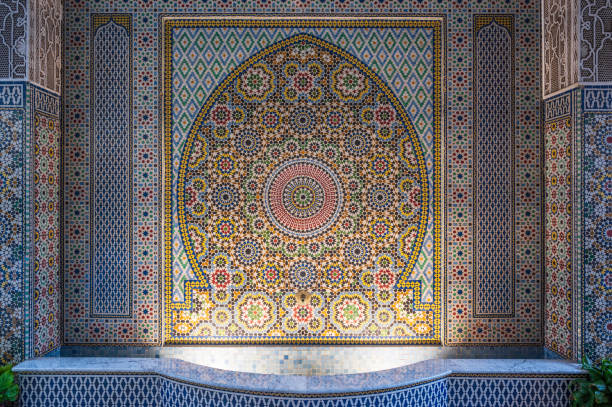"Unearthing the Mystique of Moroccan Decor"
Introduction: Moroccan decor, with its vibrant colors, unique patterns, and intricate details, is a design trend that has stood the test of time, offering a unique blend of cultural richness and aesthetic appeal. This article delves into the fascinating history and unique characteristics of Moroccan home decor, while offering contemporary styling tips to infuse this enchanting design ethos into your space.

The Origins of Moroccan Decor
The Moroccan design aesthetic has its roots in the rich cultural tapestry of North Africa and the Middle East. Influenced by the Berber, Arab, French, and Spanish cultures that shaped Morocco’s history, this design style is characterized by an eclectic mix of patterns, textures, and materials. Moroccan decor has been the darling of interior design for decades, with its popularity peaking in the 1960s and 1970s, and it’s currently enjoying a resurgence in the design world.
Characteristics of Moroccan Design
Moroccan design is renowned for its use of vibrant colors, intricate patterns, and luxurious materials. Key elements include decorative tiles, carved wooden furniture, lantern-style lighting, and plush textiles like rugs, cushions, and tapestries. Moroccan decor is a sensory feast, with each element contributing to a warm and inviting ambiance.
Modern Interpretations of Moroccan Decor
Contemporary interpretations of Moroccan design blend traditional elements with modern sensibilities. Today’s designers often incorporate Moroccan-inspired pieces into minimalist or neutral spaces, creating a striking contrast that’s both chic and comfortable. For instance, a Moroccan rug or throw pillow can add a pop of color and texture to a monochrome room, while a Moroccan lantern or mirror can introduce an exotic touch to a modern setting.
Practicality of Moroccan Decor
Aside from its aesthetic appeal, Moroccan decor also offers practical benefits. Its rich textiles and rugs add warmth and comfort to any space, making it suitable for creating cozy living areas. The use of lanterns and candles also contributes to a relaxing ambiance, while ornate mirrors and tiles can enhance the perceived size and brightness of a room. Market trends show a growing interest in Moroccan decor, indicating its enduring appeal and versatility.
Incorporating Moroccan Decor into Your Home
Incorporating Moroccan decor into your home doesn’t mean you have to overhaul your entire interior design. Instead, consider adding key pieces that reflect the Moroccan aesthetic. A Moroccan rug can add warmth and color to a room, while a lantern or intricately carved mirror can serve as a stunning focal point. Layering textures and patterns can also create a rich, Moroccan-inspired ambiance.
Moroccan decor, with its rich history and distinct aesthetic, is a trend that continues to inspire designers and homeowners alike. By understanding its origins and characteristics, and by creatively incorporating Moroccan elements into your home, you can create a space that’s not only stylish but also steeped in cultural heritage.






